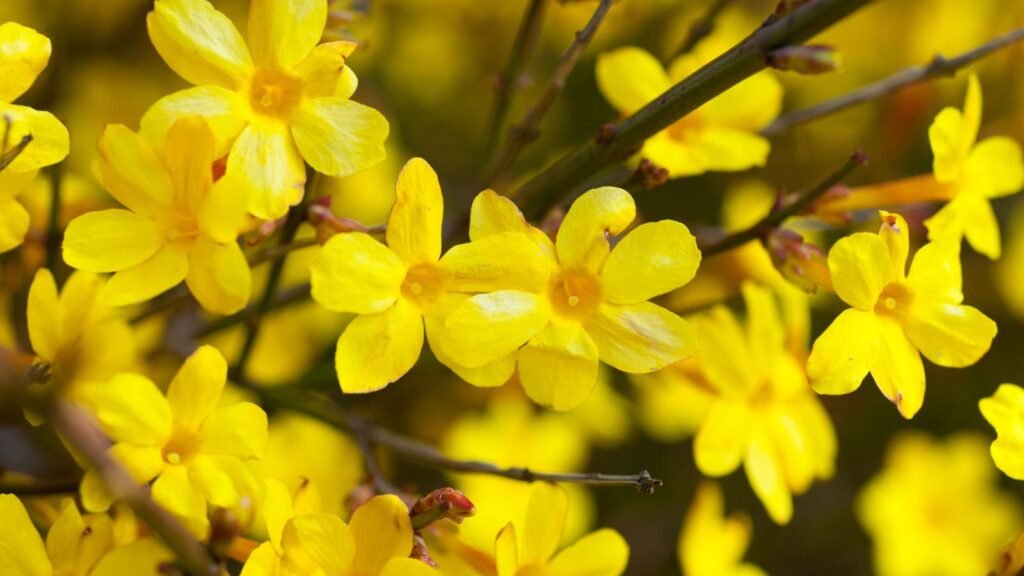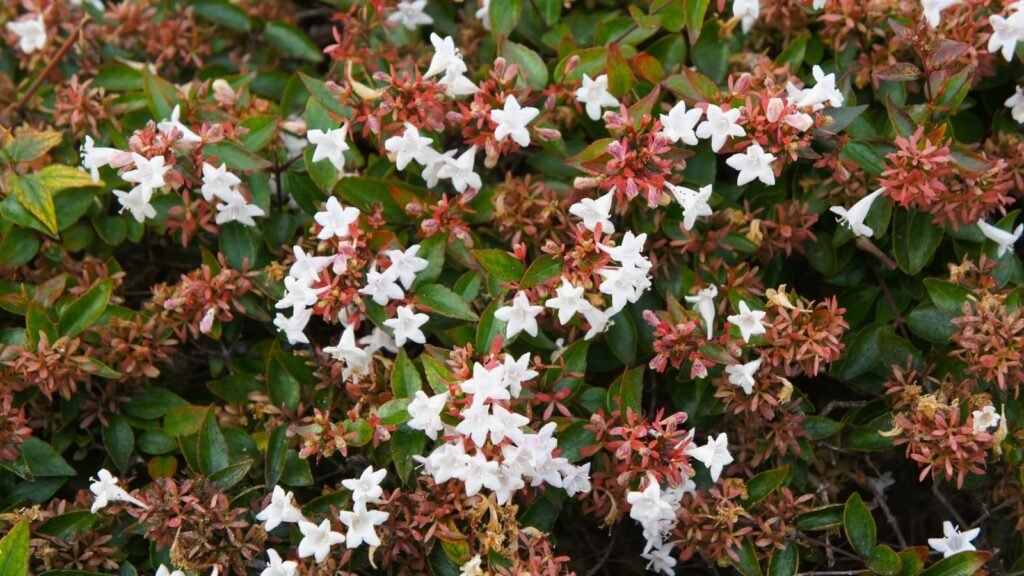Buttonbush is a native grower with ornamental and ecosystem value. Its showy little globe blooms draw pollinators with their nectar and pollen. It provides shelter for wildlife and seed forage for songbirds, waterfowl, and more.
Buttonbush is native to North and Central America and Cuba. It grows across challenging sites, including wet areas, and fulfills the roles of erosion control and habitat creation. Not to mention its aesthetic qualities of pincushion flowers and decorative seed pods. Cephalanthus is a fun, beneficial, informal addition to the garden with seasons of lasting enjoyment and enrichment.
Buttonbush Overview


|
|
|
|
What is Buttonbush?


Buttonbush is a woody shrub or small tree with fragrant, spherical flowers that decorate the stems like ornaments. The blooms provide nectar and pollen and draw hummingbirds, butterflies, and bees.
In 1735, the commercial introduction of buttonbush was to interest beekeepers in its pollinator-attracting attributes (the woodies also go by the common name “honey-bells”).
The shrubs make excellent woodland, pollinator, rain garden, and native arrangements. They perform well across meadows, slopes, and pond edges. Arrange them in small groups for impact, both aesthetically and environmentally.
The hardy growers thrive in situations other plants may find challenging, like compacted or wet soils and eroded sites. They’re fire-resistant and heat-tolerant and not usually severely damaged by deer.
Characteristics


C. occidentalis has a loose, rounded habit. It usually forms a mid-sized to large shrub but can become a small tree, growing 12 to 20 feet in the wild. In the home garden, six feet is more average, with dwarf cultivars available.
From June through September, creamy white flower clusters appear in little globes. Each round, packed with tiny flowers, measures one to two inches in diameter. Flowers are tubular with long styles for a flared, satellite effect. The pincushions are showy and fragrant.
After flowering, spherical seed clusters emerge in rich reddish-brown. They ripen in late summer and early fall and persist into winter, extending visual interest and forage opportunities.
Leaves are glossy green and tapered and four to six inches long. They turn a mellow yellow-gold in the fall before dropping. New growth emerges on coppery stems that turn woody brown as they mature.
Buttonbush is a fast-growing shrub and forms small thickets in the wild with its spreading roots. Plant parts contain the toxin cephalathin, which is poisonous if ingested in quantity.
The leaves provide food for larval-stage sphinx moths. Skippers, monarchs, eastern tiger swallowtails, and bees frequent the blossoms.
Native Area


In the madder family (Rubiaceae), C. occidentalis is native to Eastern Canada, the United States, Central America, and Cuba. It occurs naturally in low-lying, wetland areas along marshes, swamps, streambanks, ponds, and in moist woodlands.
Planting


C. occidentalis grow three to six feet wide, depending on the variety. Space them three to five feet apart at planting to allow for mature growth.
Dig a hole twice as large as the nursery pot and loosen the surrounding soil to promote root growth. Water deeply at planting and throughout the growing season for consistently moist soils.
Transplanting


Spring and fall are the best times for planting. Cool temperatures and seasonal moisture give plants time to establish before winter and summer temperature fluctuations. For the least stress on the new plant, avoid freezing conditions and extreme heat or drought periods.
How to Grow
The woody growers are low maintenance and don’t need much special care. Even so, specific cultural requirements like regular moisture are best for optimal health and flowering.
Light


The native growers do best in full sun (six or more hours daily) to partial shade (four or more hours). They may need more water in full sun to prevent soils from drying.
Morning sun is optimal as part of the daily requirements. In more shade, they’ll have fewer flowers.
Water


C. occidentalis is one of those unique specimens that tolerates standing water and wet soils. Outside wetland and boggy areas, it adapts to the garden bed with moderate irrigation.
Buttonbush experiences stress during periods of drought and dryness. It doesn’t withstand prolonged drought beyond occasionally dry soils. In dry situations, flowering is less as plants conserve moisture and energy.
Soil


The natives tolerate a wide range of soil textures, from clay, silt, sandy, and rocky soils to rich loams. Organically rich soils are best. Slightly acidic soils with a pH of 6.0 to 7.0 are preferable.
At planting, add compost from completely broken-down plant material, especially in poor soils like clay and sand. The organic matter helps with aeration, moisture retention, drainage, and nutrition.
Temperature and Humidity


Buttonbush has a wide temperature range. It’s heat-tolerant and native to humid environments. It’s also cold-hardy, perennializing in zones 5 through 9.
Fertilizing


The woody growers do well in nutrient-rich soils without additional fertilizers. They’ll benefit from fresh compost when planting. Topdress with compost in fall or late winter if soils need added nutrition.
In poor soils or to boost nutrition, use a slow-release organic fertilizer in the spring. A low grade 5-5-5 or balanced 10-10-10 works well.
Maintenance


Other than regular moisture, especially during dry spells, C. oddidentalis is low-maintenance. The open, rounded, naturalistic habit warrants little pruning. For a more kempt appearance, prune leggy branches to become side branches. The overall appearance is loose, natural, and slightly irregular. If you have a tall specimen, you can limb it up along the multi-trunks to form a small tree.
To prune for size and rejuvenation, do a severe cutback in the spring before new growth emerges. Prune stems close to the base to promote fresh growth.
Maintain a layer of mulch in garden beds for moisture retention, insulation, and temperature regulation.
Propagation
Propagate buttonbush from seeds, cuttings, and root divisions (unless your variety is protected under a plant patent, which prohibits propagation). Seeds and cuttings root best in moist, sandy soils with poor drainage. Seeds from cultivars won’t necessarily reflect the parent plant.
Growing From Seed


Collect seeds as they ripen and brown in late summer. The seeds don’t need any special pretreatment to germinate. Sow them directly in a prepped garden area, tray, or cells, covering them lightly with soil. They flower in the third or fourth year from seed.
Cuttings


With a few steps, propagating from cuttings is a streamlined process. Research shows that it’s best to take softwood cuttings in spring and hardwood cuttings in fall.
Here are steps for best practices in taking cuttings:
- Cut a four-to-six-inch piece of healthy stem. If you are propagating in spring, take softwood, and take hardwood in fall.
- Remove the foliage from the bottom ⅔ of the cutting (keeping at least two leaves intact). If remaining leaves are large, cut them in half. Keep cuttings moist until ready to pot.
- Optional: moisten the cutting and generously coat the lower stem with rooting hormone. Tap off any excess rooting powder.
- Plant the cutting in at least two inches of moist, well-draining potting mix.
- Place the pot in a bright, warm location, avoiding direct sunlight.
- Water as needed, keeping the soil evenly moist.
- When the cutting resists a gentle tug, roots are in place and ready to be repotted.
- Plant the cuttings in four-inch pots and move them outside in mild conditions. New plants will be tender.
Division


Division from offshoots is easy if your shrub is showing new growth popping up from its roots. Suckers are the offshoots that arise from the plant’s base. Division involves separating them from the mother plant and transplanting them into containers or their new garden location.
To divide rooted offshoots:
- Loosen the soil around the shoot with a fork or spade and lift it gently. Keep attached roots intact.
- With the spade, pruners, or sharp blade, cut off the suckering growth with fibrous roots. Replace the soil around the mother plant.
- Trim long stems in half so they can absorb nutrients and develop a shrubby habit.
- Tuck the division in its pot or garden bed and water regularly as roots develop.
Popular Varieties
Cephalanthus occidentalis has several varieties that offer compact, dwarf habits and robust flowering. The ornamentals show vigorous growth and improved form.
‘Sugar Shack’


C. occidentalis ‘SMCOSS’ is a compact cultivar at four to five feet tall, making it versatile in a range of garden scales. It’s also more cold hardy than the straight species, down to zone 4.
‘Sugar Shack’ is showy with creamy white flowers and reliable bright red berries. Glossy green leaves become tinged with burgundy red and gold in the fall. It received the Pennsylvania Horticultural Society’s Gold Medal Award in 2024.
‘Keystone’


‘Keystone’ is a natural selection that grows vigorously to reach eight to twelve feet tall. The U.S. Natural Resources Conservation Service introduced it from northeastern seedlings.
‘Keystone’ is a habitat restoration specimen, prime for wetland areas and providing forage and shelter for waterfowl. It withstands three feet of standing water but adapts to upland situations like all in the species.
‘Sputnik’


C. occidentalis ‘Bieberich’ is from Sunhsine Nursery in Oklahoma, discovered in a native stand. The selection grows large with a well-formed, rounded habit at five to twelve feet high. The globe blooms are pale white.
New leaves emerge fresh, bright green. In the fall, the glossy foliage turns coppery-bronze for added interest.
‘Fiber Optics’


C. occidentalis ‘Bailoptics’ is another compact specimen like ‘Sugar Shack,’ this one discovered as a seedling in Minnesota. ‘Fiber Optics’ reaches five to six feet high with an attractive, dense form.
New shoots emerge reddish brown, with less coarse foliage. The little globe blooms have fiber optic-looking styles.
Common Problems
Buttonbush is free of most pests and diseases. They may occasionally experience aphids, thrips, scale, and leaf spot. The best control is prevention through maintaining optimal cultural requirements.
Pests


The best way to control insects is to spot them early. You’ll likely see the insects themselves or notice their sticky waste, yellowing leaves, or stunted growth.
Aphids are common garden pests usually treated with non-chemical means. Often, they cause no damage, but severe infestations cause stress. Signs include curled leaves and stunted growth.
Thrips are tiny insects that feed on tissues and carry viruses. Leaves may look silvery and stippled or brown and papery.
Not all thrips are harmful; some feed on aphids and mites as natural pest control. If you see thrips but no indicators of damage, hold off on treatment. If damage accompanies the insect, it’s easy to control them early on.
Scale pierce leaves and stems to feed on sap. They appear on the undersides of leaves and stems as black, gray, or silvery dots. Leaves may yellow and drop, with branches dying back in heavy infestations. Remove affected plant parts in severe infestations.
If you detect insect infestation, spray the plant with a strong stream of water to deter and knock insects off the stems. A simple horticultural soap helps diminish pests, but follow label directions, as these also affect beneficial insects.
Beneficial insects like ladybugs, hoverflies, lacewings, and parasitic wasps offer natural pest control and population management. Plant a diversity of species to attract these beneficials. Thankfully, buttonbush is one of those beneficial insect attractants.
Diseases


Buttonbush seldom experiences diseases, but leaf spot is an occasional issue. Leaf spot is a fungal infection that manifests in yellow or brown leaf spots that may transition to red or black as the season progresses. To treat leaf spot, remove damaged leaves (including fallen leaves).
Horticultural oils like neem can treat fungal diseases early on (but again, these impact beneficial insects, so be sure to follow application requirements). It’s best to remove plants with severe infestations.
Frequently Asked Questions
The adaptable native shrubs tolerate a range of conditions. They grow in the home landscape and upland garden beds with moderate irrigation for moist soils, particularly during dry spells. If you do have a wet zone, buttonbush is a carefree candidate.
The flowering woody natives are not invasive or aggressive. They spread via roots and seeds in optimal conditions in the wild, where they form thickets. They’re well-behaved in the home garden. Use them in a mixed border, small groupings, or as a single specimen.



